Try It Again Daniel Tiger Episode
Right TV Shows Can Help Kids Develop Social Skills
By: Heidi Toth
Researchers in mass media and autism education found young children who watch "Daniel Tiger's Neighborhood" learn empathy and other school readiness skills.
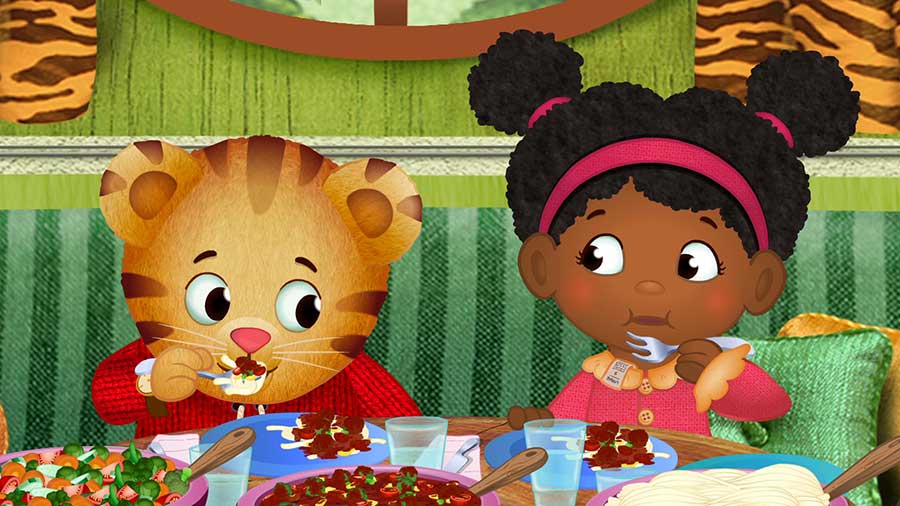
Imagine if a person's future success could be predicted in kindergarten.
While the United States is nowhere near an Aldous Huxley-inspired society where futures are assigned at or before 5 years old, the years leading up to and including kindergarten are a critical time for children to learn the skills needed to build relationships, become independent and communicate with others. Neither success nor failure are guaranteed by this age, but it's a lot of pressure to put on 5-year-olds – and the people raising them.
"Research shows kids who develop certain social and emotional skills by kindergarten are more successful socially and academically in both kindergarten and beyond than kids who don't have those social and emotional skills by that time," said Eric Rasmussen, an assistant professor of public relations in the College of Media & Communication at Texas Tech University. "The preschool years are really important for building these skills."
Those skills – empathy, recognizing others' emotions and knowing how to respond, following directions, asking for help and the ability to do age-appropriate tasks for themselves, among others – are known as school readiness skills. They are frequently taught through interactions with parents, siblings and peers, modeling, parental mediation and curricula in preschool and day care.
Rasmussen, who studies children and mass media, wondered if prosocial television programming – in this case, the PBS KIDS show "Daniel Tiger's Neighborhood" from the Fred Rogers Company – could help children develop these skills. He gathered a group of media and child development researchers and asked a seemingly counterintuitive question – can watching TV be good for children?
The short answer? Yes.
The long answer is more complicated – yes, if it's the right TV and is accompanied by parents who talk to their children about what they're watching. In another, related study, a researcher who studies autism found "Daniel Tiger's Neighborhood" may actually help children with autism spectrum disorder (ASD) pick up skills as effectively as specialized video modeling, the long-time gold standard in autism treatment.
"Realistically, I don't believe for a second that you can plop a kid with autism down in front of a TV show and that be the primary means of instruction," said Wesley Dotson, co-director of the Burkhart Center for Autism Education & Research and lead author on the second study. "But it can be really hard to find things that engage a child with autism, and 'Daniel Tiger's Neighborhood' does seem to engage kids with autism to a high degree."
Who is Daniel Tiger?
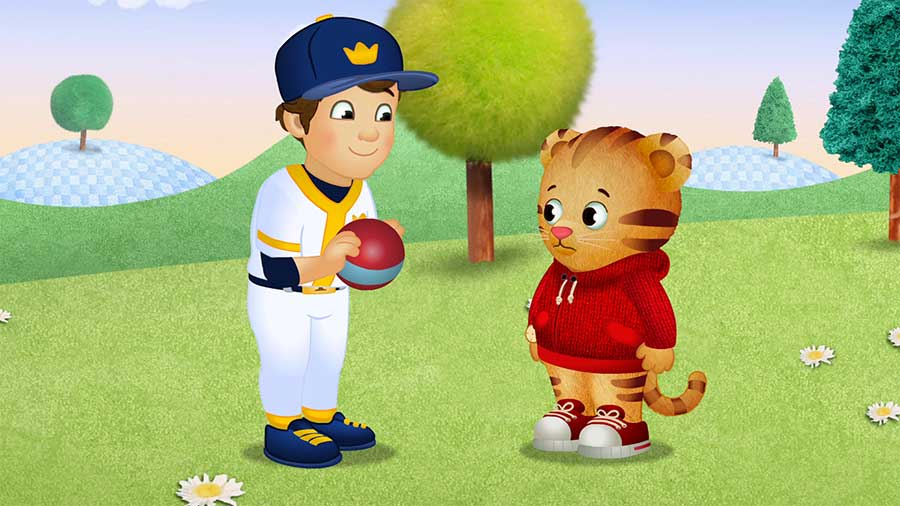
Parents of today may notice some familiar themes as they watch "Daniel Tiger's Neighborhood" with their children. The show is the cartoon descendant of "Mister Rogers' Neighborhood;" the 4-year-old animated Daniel Tiger is the son of Daniel Striped Tiger, a puppet from the Neighborhood of Make-Believe. Daniel's friends also are the children, siblings, nieces and nephews of characters on the original show.
It was created with the intent of teaching young children, Rasmussen said. As he considered research into children learning from the media, he and other researchers looked at the shows their children were watching. His then-4-year-old daughter watched "Daniel Tiger's Neighborhood," and he noticed how carefully crafted each episode was.
Rasmussen contacted Out of the Blue Enterprises, one of the creators and producers of the show, and learned about the research into child development and media that goes into each episode, down to how fast the scene switches, when the characters talk at the camera versus to each other and the repetitive nature of the songs.
"We found out all the strategies that go into the show and the purpose of each episode," he said. "We were able to really understand why the curriculum does what it does and what the goals of each show were."
He also learned Daniel Tiger was designed for children 4 years and younger and their parents, especially low-income families who might need extra help with strategies on fostering the social skills needed to succeed in school. Daniel Tiger has many of the same experiences young children do, including going to school for the first time, being afraid of getting a shot at the doctor's office, trying new foods, getting along with friends and listening to their parents.
The effect of prosocial media on children
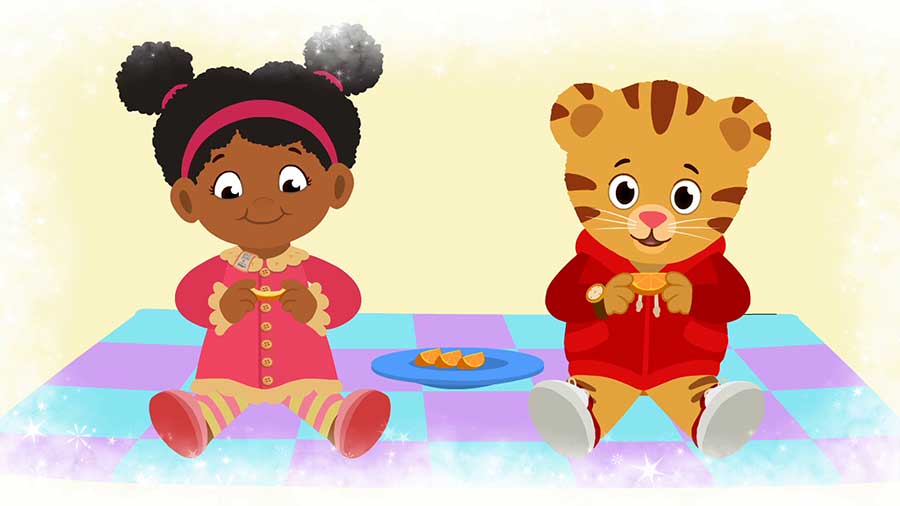
Rasmussen and his colleagues enrolled 127 preschoolers between the ages of 2 to 6, plus one parent per child, in the study. About two-thirds of the group was classified as low-income, which Rasmussen said was intentional.
"The low-income kids don't get some of the social interactions that are necessary to develop these school-readiness skills," he said. "Those are the kids that need it."
The participants were divided into groups:
- A group that watched "Daniel Tiger's Neighborhood" with their parents and talked about it frequently.
- A group that watched the show with their parents but did not talk about it.
- A group that watched the show without their parents and did not talk about it.
- A control group that watched episodes of a nature documentary.
After two weeks, with children watching one episode per day, they returned to the lab to be tested on three skills: empathy, emotion recognition and self-efficacy, which is basically the child's confidence in his or her ability to be successful in social interactions. Researchers measured empathy by asking parents a number of questions about how their children reacted in certain situations; emotion recognition by showing children a series of faces and asking them to identify which emotion showed on the face; and self-efficacy by having two frog puppets, Muffy and Fluffy, say statements like, "I'm good at making friends" and "I'm not good at making friends," then asking the children to choose which puppet they were more like.
The results showed children who came from homes where regular parent-child communication about TV takes place showed greater empathy, emotion recognition and self-efficacy. How much parents talked to their children about TV during the study was inconsequential – what made the difference in whether children learned from watching the show was the long-term consistency of parents talking with their kids about television content. This was especially evident in the 2- to 4-year-olds and the low-income children. With the age difference, Rasmussen said they thought older children likely already had those skills, so any benefit was minor.
The low-income dynamic is a tougher piece to tackle. The researchers theorized children from higher income households had more access to opportunities to develop these skills, so they needed the lessons from the show less. However, low-income children also are more likely to live in a higher state of stress because parents may be worried about employment, money and housing. Additionally, if the poverty was generational, their parents may not have adequately developed these skills when they were young and thus may be less effective at interacting with their children.
That leads to Rasmussen's next research question – can parents learn parenting skills from watching "Daniel Tiger's Neighborhood?" Although the adults in the show don't directly address the parent viewer the way Daniel does with children, his parents, teacher, doctor and other adults do model empathy, listening, encouragement and emotion recognition. Rasmussen thinks Daniel Tiger could help parents as well, which is a necessary part of the equation.
"It's not enough to just plop your kid in front of the TV and hope they're going to develop these social and emotional skills," he said. "There has to be a certain level of involvement in kids' TV viewing experiences."
One other finding stuck out to co-author Malinda Colwell, an associate professor of human development and family studies in the College of Human Sciences. Researchers found the children who were more familiar with the characters on "Daniel Tiger's Neighborhood" had better socio-emotional skills. The researchers thought this had less to do with actually spending more time watching the show than it did with relating to the characters and thus focusing better on what those characters were doing.
"One explanation is that children may have more familiarity with the characters because they relate to them well and they like them and therefore learn more from them because they pay close attention," she said. "Young children are clearly influenced by those characters (and people) they relate to and want to be like."
Exploring Daniel Tiger and autism
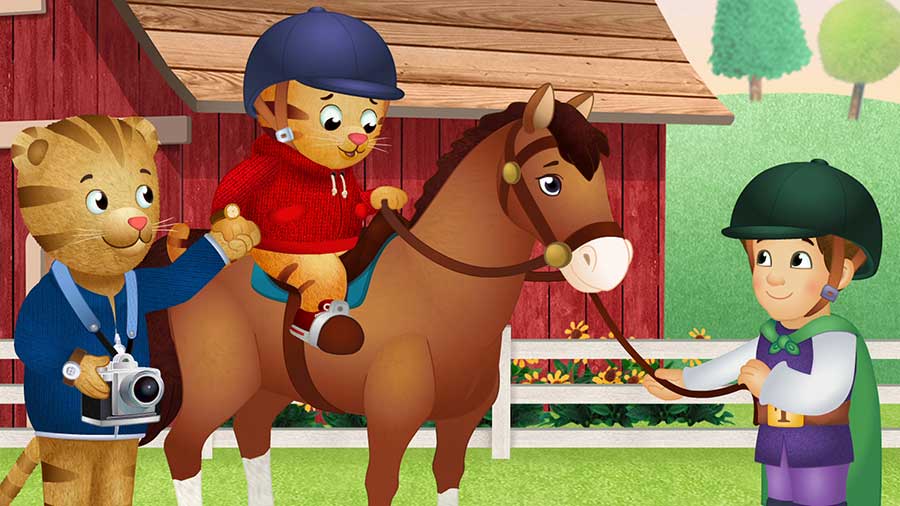
As the Daniel Tiger producers worked with Rasmussen, they passed on some anecdotal evidence they'd heard: "Daniel Tiger's Neighborhood" was good for teaching life skills to children with autism. Rasmussen reached out to Dotson and brought him to the research team.
Dotson started with watching the show. After a few episodes he understood why children responded to Daniel Tiger; the episodes were designed in the same way autism researchers design effective instruction. Each episode was based around a skill or experience, like trying an unfamiliar food, and showed Daniel or another character describing the skill and each step, modeling the skill, inviting the viewer to try it and offering feedback.
Moreover, no other autism researchers have examined the idea that a TV show could effectively teach skills. The prevailing wisdom has been that video modeling must be designed for each specific child, since autism is a spectrum disorder. Researchers also thought children needed an adult to walk them through each step and reinforce what was on the video to make learning effective.
To isolate the effect of "Daniel Tiger's Neighborhood," the researchers brought in two high-functioning 5-year-old boys with ASD one at a time. They picked two skills: trying new foods and stopping play when asked. Researchers tested each boy, having them play in a room with adult supervision but no interaction. After a few minutes, the adult would ask the boy either to stop playing and come to the door or to try some of the food that had just been brought out. Neither boy responded to either request.
With that as a baseline, the researchers had each boy come in separately, play for a few minutes, test one of the skills, then send the boy into a different room to watch the Daniel Tiger episode about that skill. An adult was present but still not interacting. After the episode the child went back into the play room, played for a few minutes, then was invited to try a new food. There was no hinting, cajoling or referencing Daniel Tiger from the adult.
"Because I know that adult involvement in teaching absolutely will lead to learning, I wanted to pull that out," Dotson, the study's lead author, said. "I could have had the adult in the room with the kid prompting and saying, 'Hey, look at Daniel Tiger trying new foods! If you have food in front of you, you should try it too, and here's how.' Well, if they tried the food, experience would say it's because the adult told them to do it and used the cartoon as a way to have the conversation. We wanted to know if they only watched the cartoon, what happened?"
"There was never a prompt to say, 'Show me how Daniel Tiger tries new food' or 'Show me how Daniel Tiger stops play,' or 'Would you stop play like Daniel Tiger?' We didn't do any of that, and that's actually what the literature would suggest we would need to do."
The results were astounding. Researchers found both boys learned the skills simply from watching the show. They didn't pick up each skill immediately and they didn't perform each skill perfectly every time, but they did learn the skill. One boy, who hadn't tried new foods in months, watched the episode twice and had no problems trying new foods in six consecutive meetings, even without watching the episode again.
"That was really the moment when my jaw dropped and I said 'Wow. We've got something here,'" Dotson said. "I don't know what it is yet, but there's something here to understand, because kids with autism who are food selective don't just walk in one day and try everything that's put in front of them."
It was a small study; the numbers dropped from five to two after one child lost interest in "Daniel Tiger's Neighborhood" and the parents of two other children went home and practiced the skills with their children. Because of its size and the nature of autism as a spectrum disorder these results can't be extrapolated to children with autism at large, but it does introduce new ideas about how to teach effectively.
"Although that study was done with just two kids, it was a rigorous, extensive study on these kids' reaction to 'Daniel Tiger's Neighborhood,'" Rasmussen said. "This was the first time with any number of kids that the rigorous research methods used in autism research were employed to see whether kids on the autism spectrum could learn from it. It can't be generalized to all kids with ASD, because the spectrum is so broad, but it does provide initial evidence that TV, especially programming aimed at teaching kids, may be a way to model behaviors for kids on the autism spectrum."
Next steps
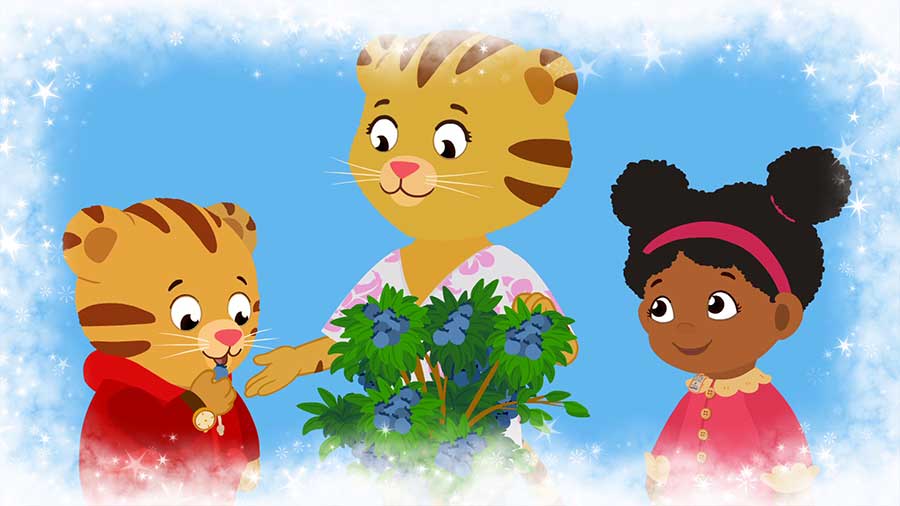
The research into autism raised more questions than it provided answers. Dotson and the other researchers are working to replicate the results found in the pilot study. Because they are working with more children, they have older and younger children along with some who are high-functioning and others who are almost nonverbal, which has produced different results. They also are determining the frequency with which children need to watch the episodes to learn the most; he is finding too much time between visits is not helping the children.
On the mass media side, Rasmussen and his team are looking at whether parents can learn parenting skills from "Daniel Tiger's Neighborhood" and looking at children's use of an app based on the show. They want to know how playing games can supplement what children learn from watching the show.
Outside of research, the team is hoping parents, teachers and caregivers can use this information to help children. From Colwell's perspective as a child development researcher, it's a promising step that mainstream media is taking a role in helping children develop life skills and encouraging conversations between children and parents.
"The show is developed with children and their families in mind," she said. "Our findings support the importance of parents talking with their children about social situations when children are quite young. This reinforces the idea that young preschoolers are learning much about social interactions, as well as expressing and responding to emotions, through what they see Daniel Tiger and his friends do."
Source: https://www.depts.ttu.edu/research/discoveries/posts/Fall-2016/daniel-tiger.php
0 Response to "Try It Again Daniel Tiger Episode"
Post a Comment